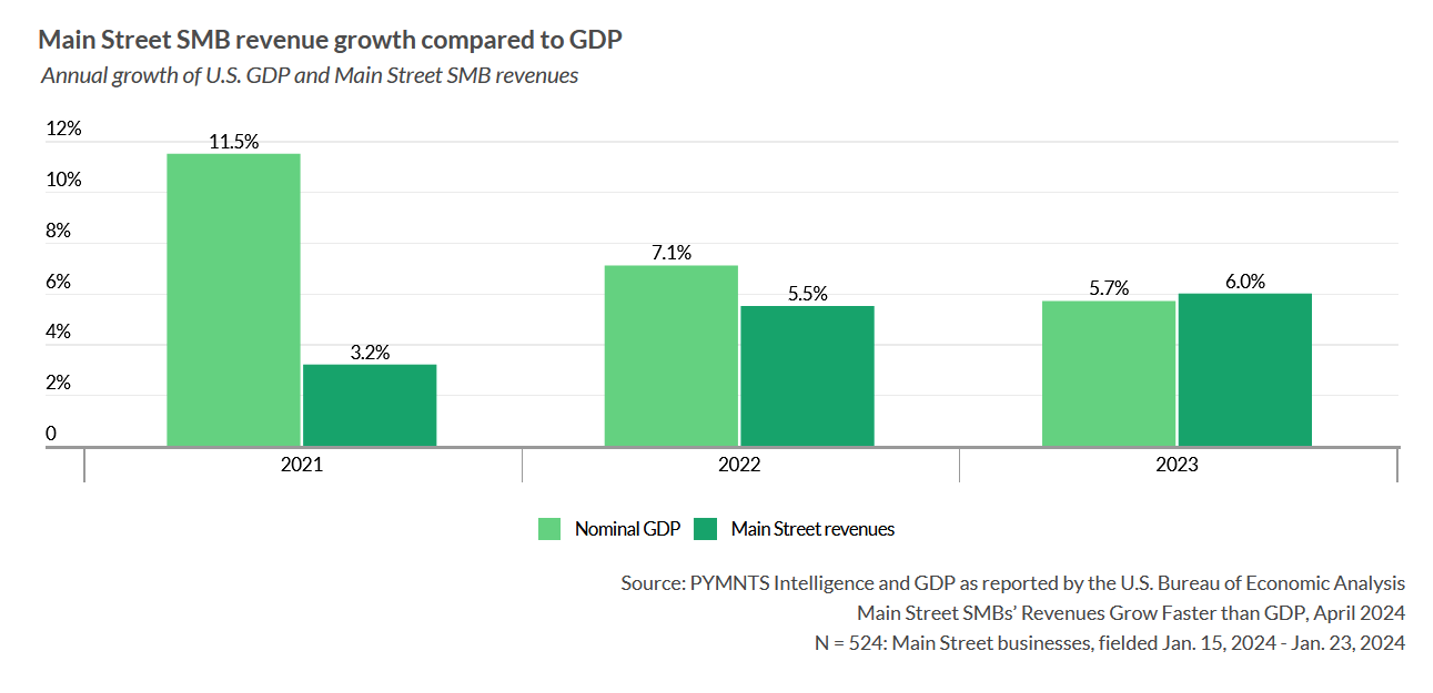
Despite news about rising inflation and stalled interest rates, recent PYMNTS Intelligence data confirms that many of the small and medium-sized businesses (SMBs) that dot Main Street USA are demonstrating real resiliency.
According to the latest edition of our SMB Growth Monitor Report, “Main Street Small Business Growth Exceeds GDP for First Time in Two Years,” most mom-and-pop shops are seeing an upward trajectory, with revenues growing by 6%. And data confirms this growth is a continuation of a three-year upward trend dating back to April 2021.
The report, which draws on insights from a survey of more than 500 Main Street SMBs in the U.S. that are generating $10 million or less in annual revenues, determined that many Main Street businesses are thriving, in part, thanks to consumers having grown more comfortable patronizing local businesses — both in-person and online — now that the pandemic has passed.
This is documented when looking at how 2023 Main Street SMBs revenue growth has fared in comparison to nominal GDP growth last year.

As the accompanying figure illustrates, 2023 SMB growth markedly reversed a two-year trend in which nominal GDP growth outpaced that of SMBs. In 2021, SMBs witnessed a 3.2% growth rate while nominal GDP grew by 12%. And although SMBs had a better year in 2022, reporting a 5.5% growth rate, nominal GDP had still outperformed smaller businesses with 7.1% increase — until this year finally changed the tides.
There is additional good news on Main Street: SMBs are currently operating with significantly less risk of declaring bankruptcy than U.S. organizations in general. While the rate of U.S. business bankruptcies increased by 40% in 2023, SMBs reported only a 2% increase in the risk of closing during that time.
In fact, the potential for success on Main Street is especially high for certain SMBs. For instance, 72% of Main Street SMBs in the hospitality sector reported revenue growth in the past year. And while consumers are enjoying dining out, traveling and staying at hotels more, work-related businesses are encountering some challenges. Main Street SMBs in the professional services sector are the least likely to report growing revenues, at 30%, but this might be the result of automation and evolving work-related norms.
Other Main Street SMBs are also facing challenges. PYMNTS Intelligence found that older SMBs are growing more slowly than newer ones. As of January, just 27% of Main Street SMBs that have been in business for more than 20 years were seeing increasing revenues. Reduced revenues often make it hard for SMBs to qualify for credit, especially given the current interest rate climate.
On the other hand, if older Main Street SMBs are seeing reduced revenues, it might encourage them to revisit their business models and look for new ways to innovate. Doing so might help recoup former customers and put them in line with those SMBs seeing sustained revenue growth.